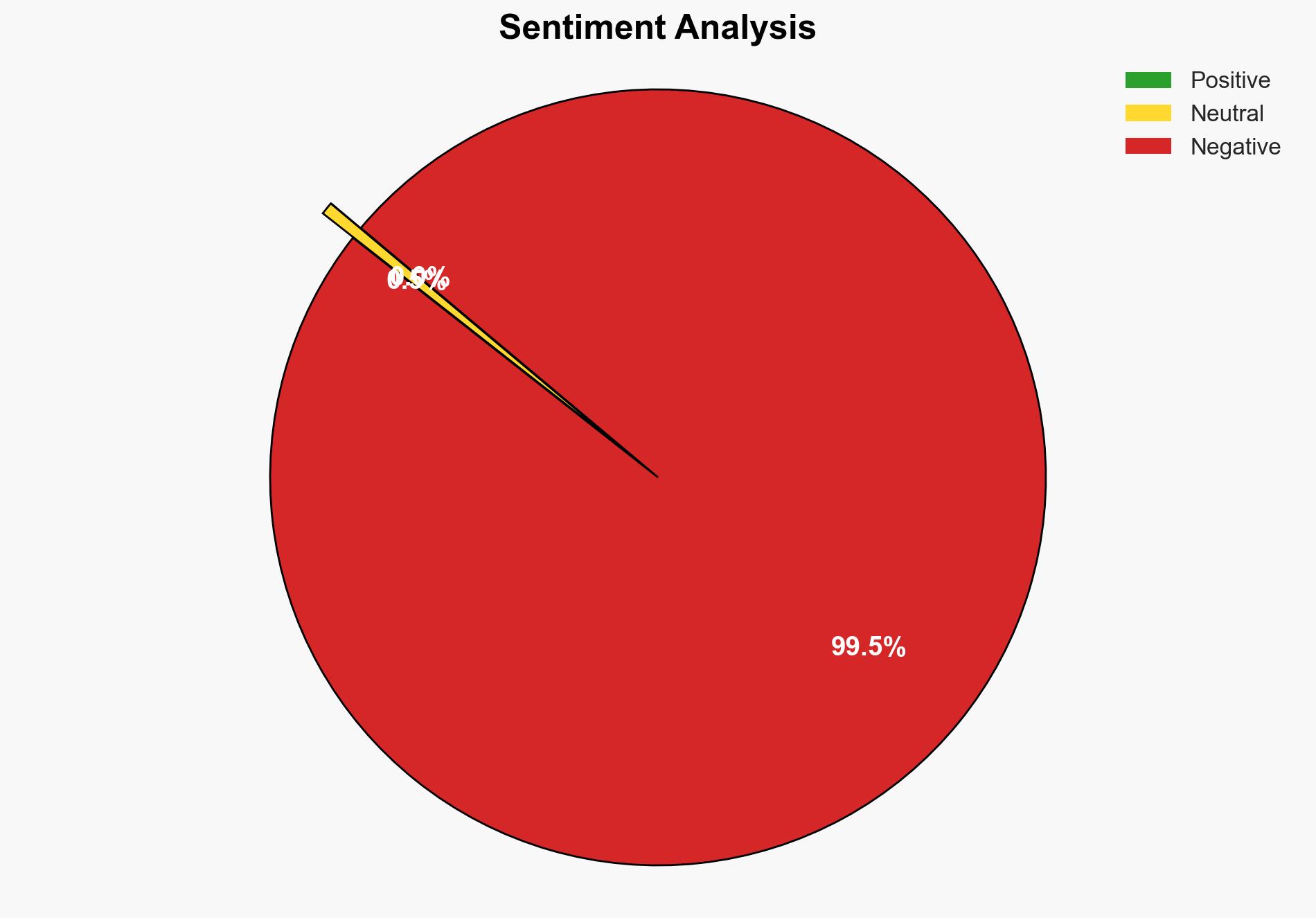TinyWall: A Free, User-Friendly Firewall Enhancing Windows’ Built-In Security Features
Published on: 2025-11-26
AI-powered OSINT brief from verified open sources. Automated NLP signal extraction with human verification. See our Methodology and Why WorldWideWatchers.
Intelligence Report:
1. BLUF (Bottom Line Up Front)
The introduction of TinyWall as a user-friendly, free, and effective firewall for Windows systems represents a significant enhancement in personal cybersecurity. With a high confidence level, the hypothesis that TinyWall will improve user engagement with firewall settings and overall system security is most supported. It is recommended that organizations and individual users consider integrating TinyWall into their security protocols to enhance protection against unauthorized network access.
2. Competing Hypotheses
Hypothesis 1: TinyWall will significantly improve user interaction with firewall settings, leading to enhanced security for Windows users.
Hypothesis 2: TinyWall will have minimal impact on overall security due to user complacency and reliance on default settings.
Hypothesis 1 is more likely due to TinyWall’s design, which emphasizes user control and visibility, potentially leading to more informed security decisions. The user-friendly interface and deny-by-default approach encourage proactive management of network access, which is a critical factor in improving security posture.
3. Key Assumptions and Red Flags
Assumptions: Users are motivated to engage with firewall settings and understand the importance of network security. TinyWall’s interface and features are intuitive enough to facilitate user engagement without causing frustration or confusion.
Red Flags: Potential over-reliance on TinyWall’s default settings without user intervention could lead to security vulnerabilities. Lack of awareness or understanding of firewall functionality among users may limit the effectiveness of TinyWall.
4. Implications and Strategic Risks
The adoption of TinyWall could lead to a reduction in unauthorized network access incidents, thereby decreasing the likelihood of data breaches and cyberattacks. However, if users do not actively manage their settings, the effectiveness of TinyWall may be compromised. Additionally, if TinyWall’s popularity increases, it may become a target for cybercriminals seeking to exploit any vulnerabilities within the software.
5. Recommendations and Outlook
- Encourage user education on firewall management and the importance of network security.
- Monitor TinyWall for any emerging vulnerabilities or exploits as its user base grows.
- Best-case scenario: Widespread adoption of TinyWall leads to a significant decrease in cyber incidents among Windows users.
- Worst-case scenario: Users fail to engage with TinyWall settings, leading to a false sense of security and potential vulnerabilities.
- Most-likely scenario: TinyWall enhances security for users who actively manage their settings, while others see minimal impact.
6. Key Individuals and Entities
No specific individuals are mentioned in the source text. The focus is on the TinyWall software and its role in cybersecurity for Windows users.
7. Thematic Tags
Structured Analytic Techniques Applied
- Adversarial Threat Simulation: Model and simulate actions of cyber adversaries to anticipate vulnerabilities and improve resilience.
- Indicators Development: Detect and monitor behavioral or technical anomalies across systems for early threat detection.
- Bayesian Scenario Modeling: Quantify uncertainty and predict cyberattack pathways using probabilistic inference.
- Network Influence Mapping: Map influence relationships to assess actor impact.
Explore more:
Cybersecurity Briefs ·
Daily Summary ·
Support us





